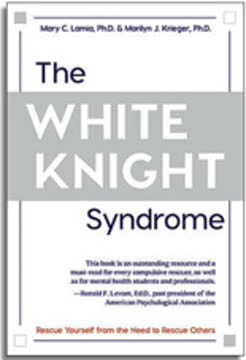Key Takeaways
1. The White Knight Syndrome: A Compulsive Need to Rescue
In the initial stages of the relationship, the rescuer seems gracious and happily altruistic, but as time goes by, he feels increasingly unhappy, disappointed, critical, and powerless.
Unconscious compulsion. The White Knight Syndrome describes a pervasive, often unconscious, need to rescue others, particularly in intimate relationships. These individuals are drawn to partners who appear needy or vulnerable, believing their heroic actions will bring admiration, validation, or love. However, this dynamic inevitably leads to disappointment and unhappiness for the rescuer.
Seeking self-healing. At a deeper level, the compulsive rescuer is attempting to mend a damaged sense of self that originated in childhood. They hope that by "slaying their partner's dragons," they can symbolically conquer the dragons from their own past. Unfortunately, this quest for self-healing through perpetual rescuing often backfires, leaving the white knight feeling defeated and repeating the very distress they experienced as a child.
Defining traits. Common characteristics of a white knight include:
- A history of loss, abandonment, or trauma.
- Emotional sensitivity and vulnerability.
- A tendency to idealize partners.
- An extreme need to be viewed as important or unique.
- Fear of emotional distance and abandonment.
- Engaging in controlling behavior under the guise of helping.
2. Childhood Wounds Fuel the Rescuer's Drive
Unfortunately, the white knight’s choice of a partner, and how that partner is eventually treated, often repeats symbolically the very same kind of distress that the white knight himself experienced in childhood.
Pathogenic beliefs. Early life experiences, particularly with caregivers, embed implicit memories and create "pathogenic beliefs" about oneself and others. These unhealthy beliefs, such as feeling unworthy or responsible for others' well-being, predispose individuals to certain relationship patterns, including the white knight syndrome. For instance, Andrew, who felt responsible for his mother's happiness, grew up to repeatedly care for troubled girls.
Attachment styles. Insecure attachment styles, formed when caregivers are inconsistent, negligent, or overprotective, can lead to feelings of helplessness and unworthiness. Children may cope by becoming overly dependent or by distancing themselves through self-centered or perfectionistic behaviors, which later manifest as narcissistic features in adult white knights. These traits are adaptations to unmet childhood needs.
Shame and inadequacy. A core driver for white knights is a profound sense of shame and inadequacy, often stemming from parental misattunement or trauma. Children may internalize this shame, blaming themselves for parental unhappiness, or externalize it by focusing on others' weaknesses. This deep-seated shame compels them to seek validation through rescuing, hoping to prove their worth.
3. Altruism and Empathy: A Self-Serving Façade
Although the white knight’s heroic actions may take the form of slaying her partner’s metaphorical dragons, her real goal involves slaying the dragons from her own past.
Egoistic motivations. While white knights consciously intend to help, their "altruistic" acts are often driven by unconscious, self-serving motives. These egoistic motivations can include seeking recognition, avoiding the pain of witnessing suffering, feeling good about oneself, resolving childhood trauma, or vicariously fulfilling one's own unmet needs. Chad, a white knight, openly admitted his desire for public recognition for his charitable deeds.
Blurred boundaries. A "sense of oneness" with the person in need can blur the lines between helper and helped. When a white knight intensely identifies with a partner's struggles, their rescuing behavior, though outwardly directed, is inwardly aimed at alleviating their own distress caused by this merged identity. Rhonda, an overly empathic white knight, sabotaged her own romantic prospects by rescuing a socially awkward man, driven by her identification with his rejection.
Empathy's double edge. Empathy, the ability to understand and share another's feelings, is highly developed in white knights. However, this capacity can be overwhelming, leading to guilt, anxiety, or even being used for manipulative purposes. While a balanced rescuer uses empathy to genuinely help, a white knight's empathy is often entangled with their own unresolved issues, making their responses self-defeating or controlling.
4. Self-Protection: The Armor of the White Knight
Trapped in the armor of a hero was a vulnerable little boy who wanted to be rescued himself.
Shielding the self. White knights employ various self-protective mechanisms to guard against emotional discomfort, anxiety, guilt, or shame. These defenses, while offering temporary relief, often hinder genuine intimacy and can confuse or hurt their partners. The core "self" being protected encompasses their self-concept, ideals, and values, which are often fragile due to early life experiences.
Distorting reality. Key self-protective behaviors include:
- Idealizing: Portraying partners, situations, or themselves as far better than reality, masking feelings of weakness or envy.
- Devaluing: Criticizing or lessening others' importance to protect against personal feelings of inadequacy or jealousy.
- Avoidance: Engaging in addictions, promiscuity, or constant stimulation to numb unpleasant emotions.
- Anger: Using rage to hide fear, responsibility, or helplessness, often blaming others to avoid personal accountability.
- Controlling: Manipulating partners to feel secure and prevent perceived threats of abandonment or vulnerability.
- Withholding Empathy: Intentionally or unintentionally suppressing empathic responses when personal needs or vulnerabilities are threatened.
The inner conflict. A white knight's dream of a "little boy trapped in a suit of armor" vividly illustrates their internal dichotomy: the proud, heroic rescuer on the outside, and the needy, vulnerable self hidden within. This armor, while offering protection, also prevents them from receiving the genuine connection and healing they truly desire.
5. The Overly Empathic White Knight: Trapped by Guilt and Fear
As unhappy as Betsy and Ron became in their relationships, living with their own unhappiness was preferable to living with the pain they anticipated they would cause their partners.
Driven by conscience. The overly empathic white knight is characterized by a heightened ability to empathize, a profound fear of emotional distance, and overwhelming feelings of guilt. They compulsively rescue, hoping to be needed, wanted, and valued in return, often at great personal cost. Betsy, who felt responsible for her mother's unhappiness, consistently chose needy partners like Phil, believing her efforts would secure their love.
Unrequited longing. This subtype often carries an unrequited longing for love and approval from childhood, leading them to seek out partners who mirror their early caregivers' needs. Ron, who became his mother's confidant and listener due to her traumatic past, was drawn to depressed, vulnerable women like Margot, hoping to provide the support he felt his mother needed and, in turn, receive the love he craved.
Self-defeating cycle. Their extreme empathy makes them hyper-aware of their partner's potential pain, leading them to stay in unhealthy relationships out of guilt. They blame themselves for their partner's inability to reciprocate or improve, perpetuating a cycle of self-sacrifice and resentment. Ron's unhappiness grew as Margot became more independent, as her lack of need diminished his role as rescuer.
6. The Tarnished White Knight: Seeking Adoration, Masking Shame
Unfortunately, this kind of healing rarely works, because the tarnished white knight has an emotional hole within himself that cannot contain whatever new love and admiration is given to him, thus leaving him perpetually needy and frustrated.
Insecurity's disguise. The tarnished white knight seeks partners who will validate and admire them, desperately trying to compensate for a deep-seated sense of inadequacy and shame developed in childhood. Brad, whose mother instilled an unrealistic ideal of perfection, sought partners like Patricia, whose bulimia allowed him to feel like a powerful "healer," masking his own academic failures.
Controlling through criticism. This subtype often uses criticism, devaluation, and manipulation to control their partner's self-esteem, thereby elevating their own. Kimberly, who felt flawed due to her mother's behavior and stepfather's critiques, controlled her husband Ben's choices, dismissing his preferences as "unsophisticated" to hide her own insecurities.
Perpetual need. The "emotional hole" within them means no amount of adoration or validation from a partner is ever enough. They are prone to idealizing partners initially, only to devalue them when the partner fails to continuously meet their insatiable need for affirmation. This leads to a cycle of disappointment, resentment, and often, infidelity, as they seek new sources of validation.
7. The Terrorizing/Terrified White Knight: Control Born of Chaos
She may be compelled to control her partner in other ways, such as by threats of abandonment or by abuse.
Chaos within. This white knight subtype typically experienced overwhelming fear and shame in a traumatic childhood, often involving abuse or neglect. Their inner world is chaotic, leading them to believe extreme measures are necessary to maintain emotional safety and avoid abandonment. Brenda, who witnessed her parents' violent fights, used explosive temper and humiliation to control her boyfriend Tony.
Abuse as control. To hide their vulnerability and fear, they project their terror onto their partners, often through emotional or physical abuse. Victor, who was physically abused by his father, replicated this pattern with his wife Jenny, imposing rigid control and physical violence when his sense of authority was challenged. Their abusive behavior is a desperate attempt to regain control and prevent perceived abandonment.
Self-sabotage. While they seek to rescue partners, their methods are inherently destructive. They are hypersensitive to anything that triggers their fear or inadequacy, reacting with rage and manipulative tactics. This ultimately drives partners away, creating the very abandonment they desperately try to avoid. Brenda's sabotage of Tony's job opportunity and Victor's physical fights with Jenny exemplify this self-defeating pattern.
8. The Rescued Partner: Helpless or Manipulative
Repeatedly, and often without awareness, the white knight seeks partners who are needy or vulnerable.
The other half of the dynamic. White knights are drawn to partners who fulfill their need to rescue. These "rescued" partners fall into two broad categories: the helpless rescued and the rapacious rescued, each with distinct traits that perpetuate the white knight's cycle. The compulsion to rescue is the defining characteristic of the white knight, distinguishing them from their partners.
Helpless rescued. These partners appear passive, needy, and weak, often tolerating abuse to maintain connection. They include:
- Depressed: Socially dependent or self-critical, seeking reassurance and support.
- Dependent: Constantly seeking advice, fearing criticism and abandonment.
- Self-defeating: Presenting as continuous victims, unable to recognize their role in their difficulties.
- Anxious Worrier: Agonizing over everything, compelling the white knight to comfort and reassure.
Rapacious rescued. These partners are covertly predatory and aggressive, manipulating the white knight to get their needs met, often through seduction. They include:
- Depleting Needy: Intense moods, impulsive, self-destructive, and manipulative, draining the white knight.
- Exotically Unstable: Engaging, dramatic, sexually seductive, but with unstable emotions and attention-seeking behavior.
- Self-Centered: Requiring continuous validation, envious, and prone to blaming others.
- Rigid Perfectionist: Obsessed with control and details, often making impossible demands.
9. Rescuing Yourself: Cultivating a Balanced Self
When you can give up knighthood and become a balanced rescuer, you will be free to find a true and worthy partner.
Self-perspective is key. The journey to becoming a "balanced rescuer" begins with objective self-reflection. This involves recognizing how your rescuing behavior stems from your own inner conflicts and unmet needs, rather than solely focusing on your partner's issues. Gaining perspective means honestly evaluating your role in the relationship and understanding what you truly seek for yourself.
Letting go of misguided hope. A crucial step is to relinquish the illusion that you can control or change your partner, and to accept the failure of past rescuing efforts. This means confronting the feelings of helplessness, despair, and yearning that your white knight façade has hidden. Engaging in challenging, self-directed activities can help redirect emotional energy and build genuine self-esteem.
Building a balanced self. Rescuing yourself involves:
- Reclaiming projections: Acknowledging your own flaws and vulnerabilities instead of attributing them to your partner.
- Examining beliefs: Identifying and challenging pathogenic beliefs from childhood that perpetuate self-defeating patterns.
- Developing self-compassion: Treating yourself with kindness and understanding, rather than harsh self-criticism.
- Establishing healthy boundaries: Learning to say no, prioritize your needs, and foster reciprocity in relationships.
- Seeking support: Engaging in therapy or support groups to process past traumas and develop healthier coping mechanisms.
By cultivating a strong, authentic sense of self, you can engage in genuinely altruistic relationships based on mutual respect and support, rather than a compulsive need to rescue.
Last updated:
Review Summary
The White Knight Syndrome receives mixed reviews, with an average rating of 3.89 out of 5. Some readers find it insightful, helping them understand relationship dynamics and self-reflect. The book categorizes different types of "white knights" and explores how childhood experiences influence adult relationships. Critics feel the categories are oversimplified or unhelpful. Many appreciate the case studies and questionnaires provided. Some readers find it eye-opening, while others feel it lacks depth or practical advice for managing rescuing behavior.
Similar Books

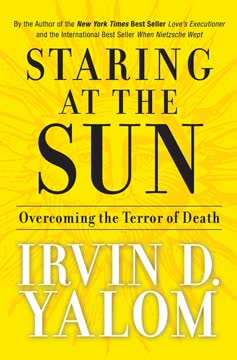
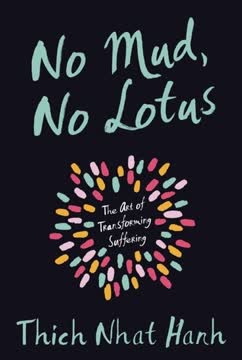
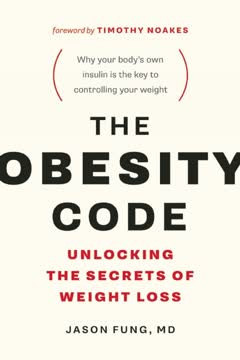
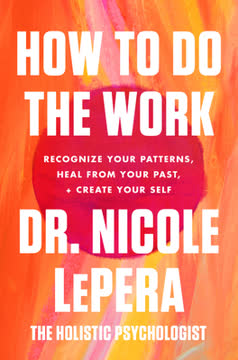
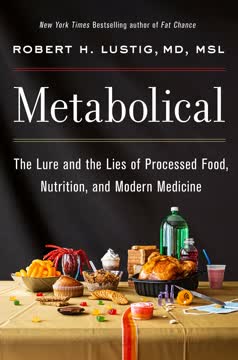
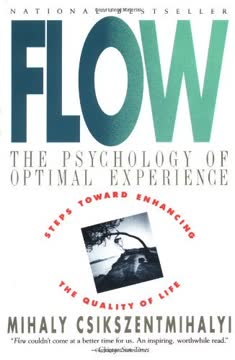
Download PDF
Download EPUB
.epub digital book format is ideal for reading ebooks on phones, tablets, and e-readers.
